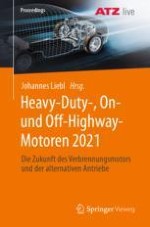2022 | Buch
Über dieses Buch
Die inhaltlichen Schwerpunkte des Tagungsbands zur ATZlive-Veranstaltung Heavy-Duty-, On- und Off-Highway-Motoren 2020 sind unter anderem neue Diesel- und Gasmotoren, Schadstoffreduzierung, Powertrain-Konzepte für den On- und Off-Highway-Bereich, Einspritzung sowie die Komponentenentwicklung im Hinblick auf das System. Die Tagung ist eine unverzichtbare Plattform für den Wissens- und Gedankenaustausch von Forschern und Entwicklern aller Unternehmen und Institutionen, die dieses Ziel verfolgen.
Der Inhalt
Die Zielgruppen
Fahrzeug- und Motoreningenieure sowie Studierende, die aktuelles Fachwissen im Zusammenhang mit Fragestellungen ihres Arbeitsfeldes suchen - Professoren und Dozenten an Universitäten und Hochschulen mit Schwerpunkt Kraftfahrzeug- und Motorentechnik - Gutachter, Forscher und Entwicklungsingenieure in der Automobil- und Zulieferindustrie
Der Veranstalter
ATZlive steht für Spitzenqualität, hohes Niveau in Sachen Fachinformation und ist Bestandteil der Springer Fachmedien Wiesbaden GmbH, ein Teil von Springer Nature. Hier wird unter einem Dach das Know-how der renommiertesten Wirtschafts-, Wissenschafts- und Technikverlage Deutschlands vereint.
Anzeige
